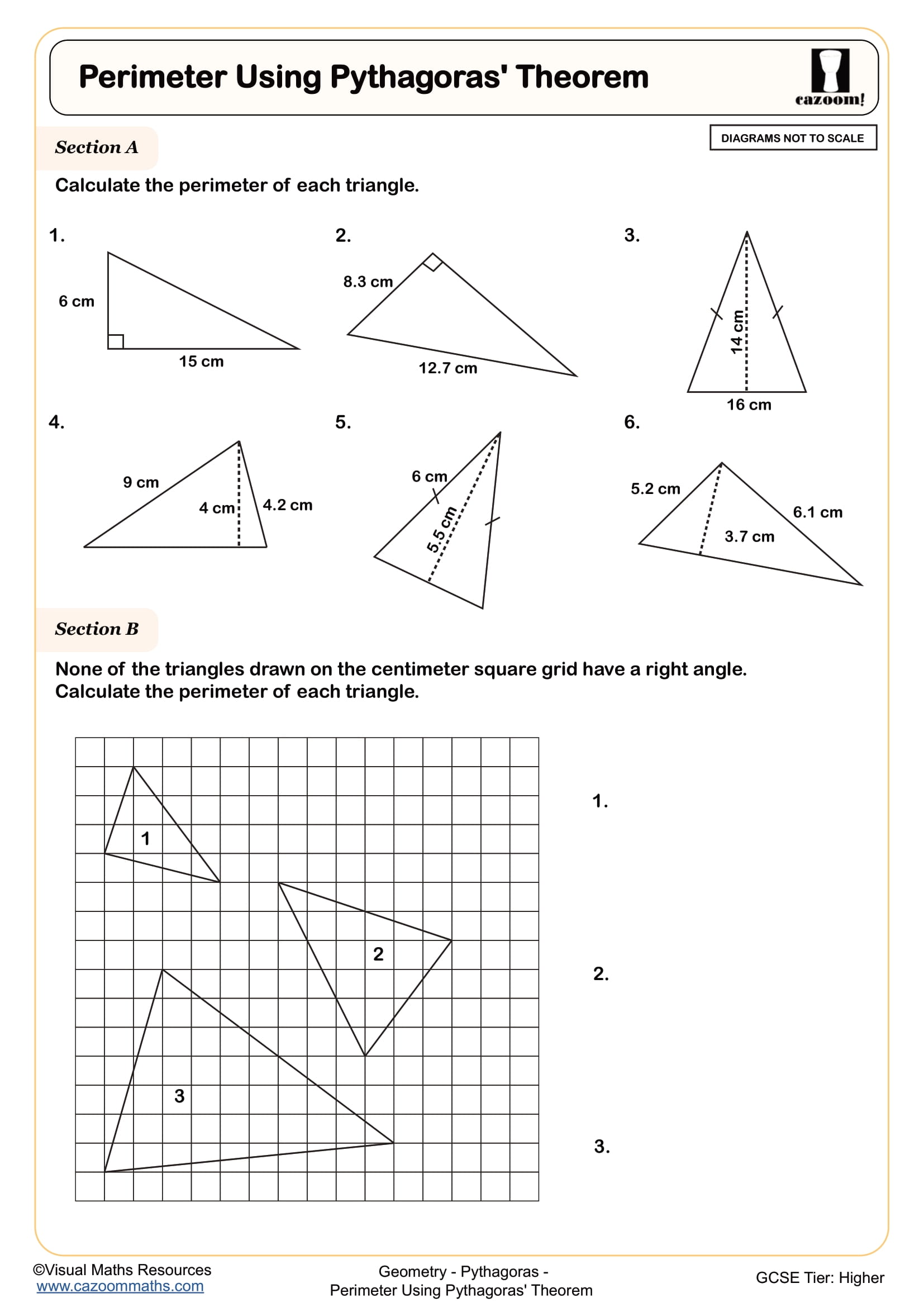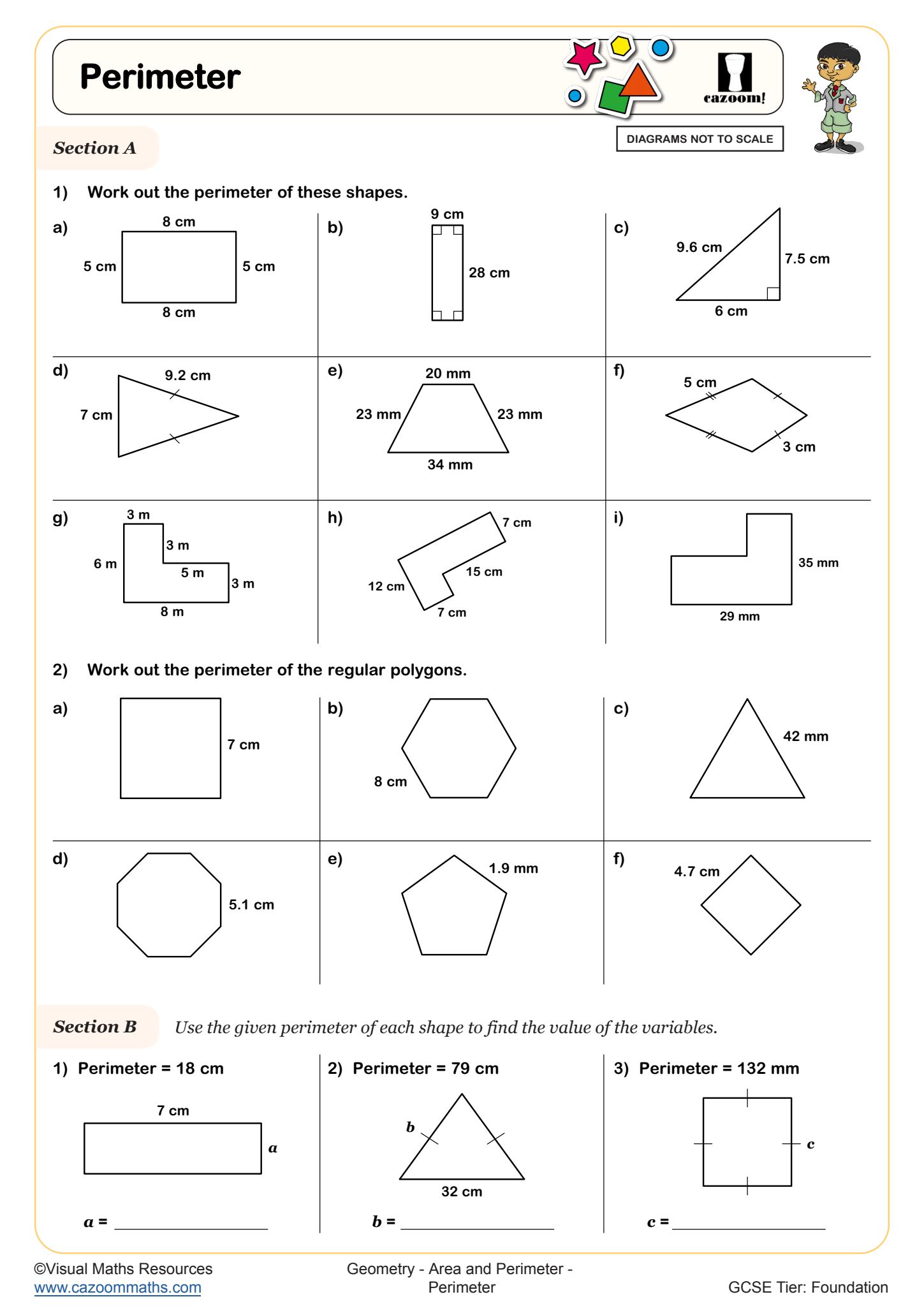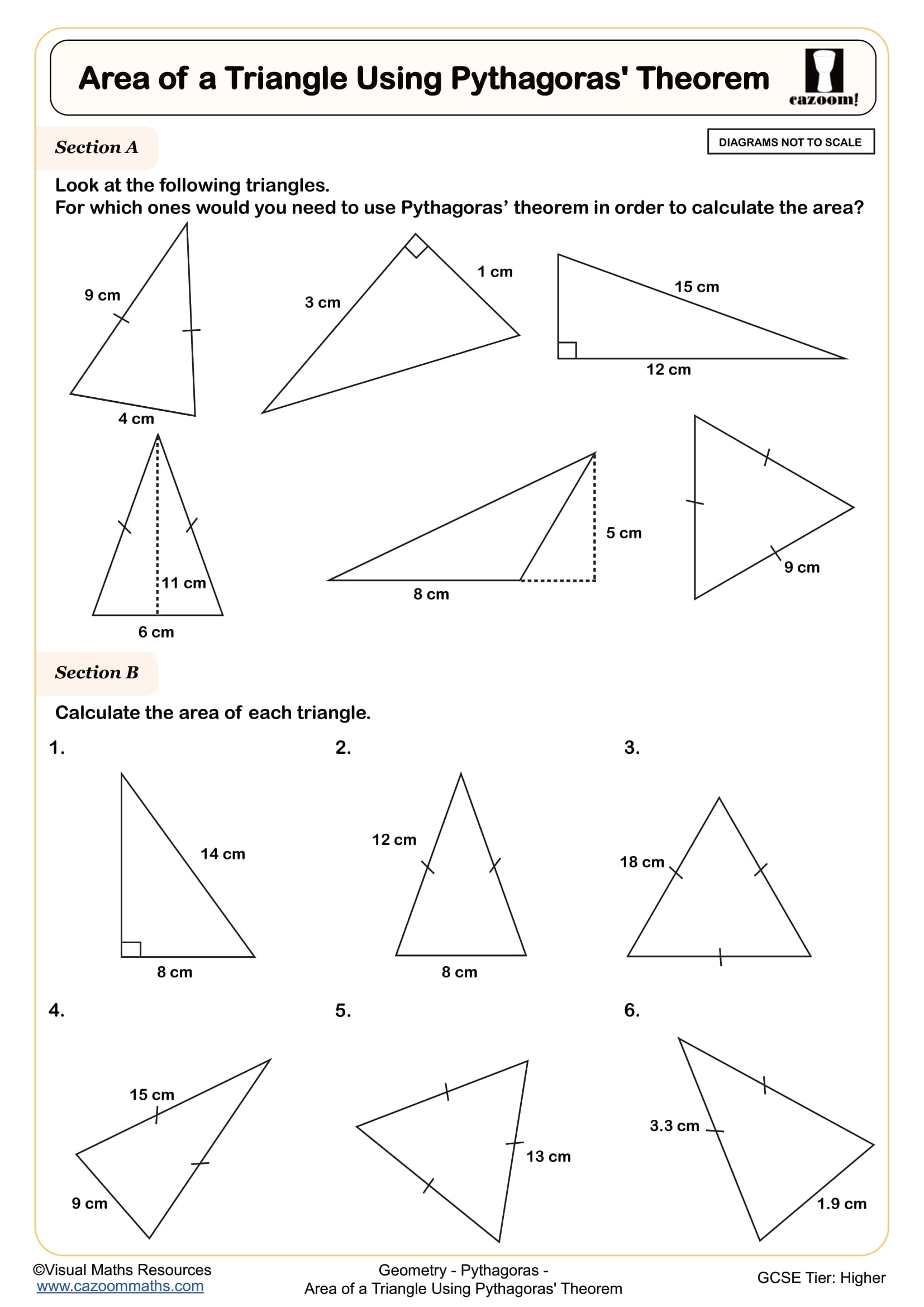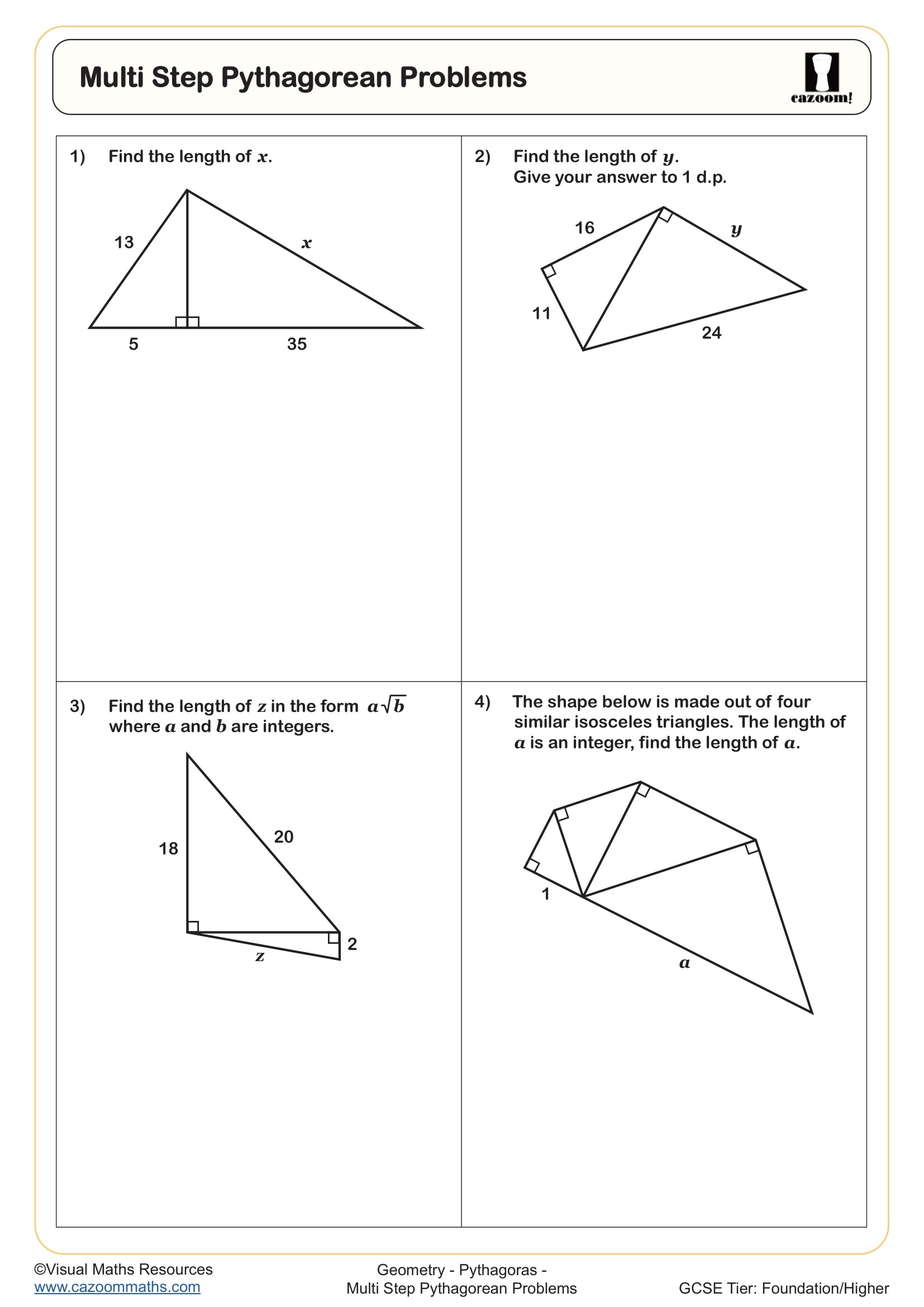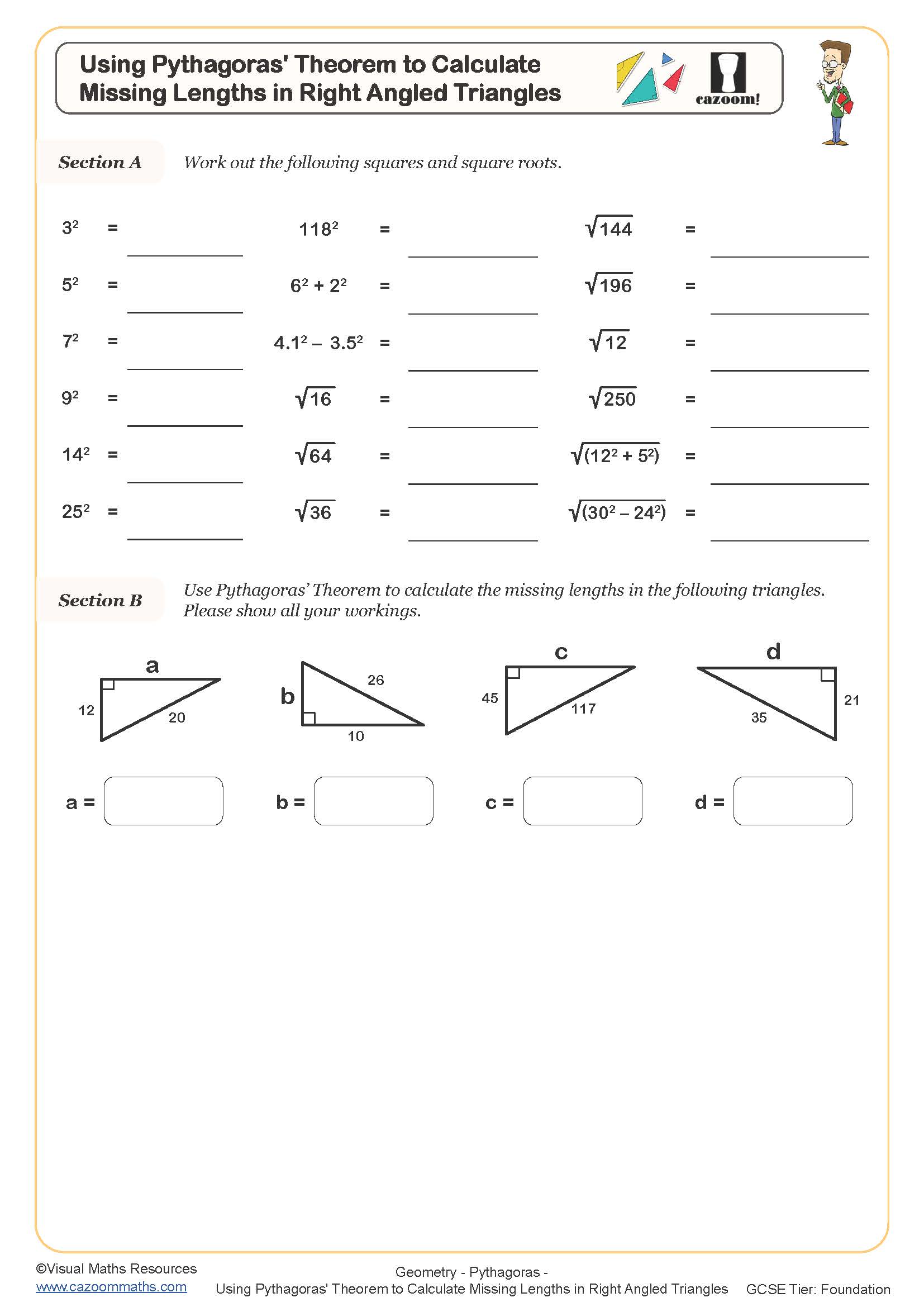Perimeter Using Pythagoras' Theorem WORKSHEET
Suitable for Year groups: Year 10, Year 11
GCSE Tier: Higher
Targeting grades: 6-7
Prerequisite knowledge: Perimeters of polygons. Ratio of amounts. Using given areas to find missing lengths. Pythagoras' Theorem including multistep problems.
Perimeter Using Pythagoras' Theorem WORKSHEET DESCRIPTION
Dive into problem solving with this engaging worksheet on Pythagoras’ Theorem.
In Section A, students calculate the perimeter of various triangles—including right-angled, scalene, and isosceles—by applying the theorem once or twice to find missing lengths.
Section B features triangles drawn on a centimetre square grid. Here, Pythagoras’ Theorem is used three times per shape, as each side forms the hypotenuse of a right-angled triangle constructed on the grid.
Section C moves on to compound shapes, including quadrilaterals and trapezia. Some problems include added constraints such as known areas or side ratios, encouraging deeper, multi-step reasoning.
This resource is ideal for learners aiming to strengthen their problem-solving skills with non-right-angled triangles and more complex geometric shapes.
In Section A, students calculate the perimeter of various triangles—including right-angled, scalene, and isosceles—by applying the theorem once or twice to find missing lengths.
Section B features triangles drawn on a centimetre square grid. Here, Pythagoras’ Theorem is used three times per shape, as each side forms the hypotenuse of a right-angled triangle constructed on the grid.
Section C moves on to compound shapes, including quadrilaterals and trapezia. Some problems include added constraints such as known areas or side ratios, encouraging deeper, multi-step reasoning.
This resource is ideal for learners aiming to strengthen their problem-solving skills with non-right-angled triangles and more complex geometric shapes.
